5 Considerations When Selecting a Portable Dissolved Oxygen Meter
YSI offers portable, handheld meters for a variety of parameter options and applications. Read on to find out how to choose the right dissolved oxygen meter for your needs.
Dissolved oxygen is a critical parameter for many applications, such as aquaculture, environmental monitoring, and wastewater treatment. Choosing a reliable and accurate dissolved oxygen meter that meets your specific requirements is essential. So, whether you are a scientist, engineer, or technician, read on to find out how to choose the right dissolved oxygen meter for your needs.
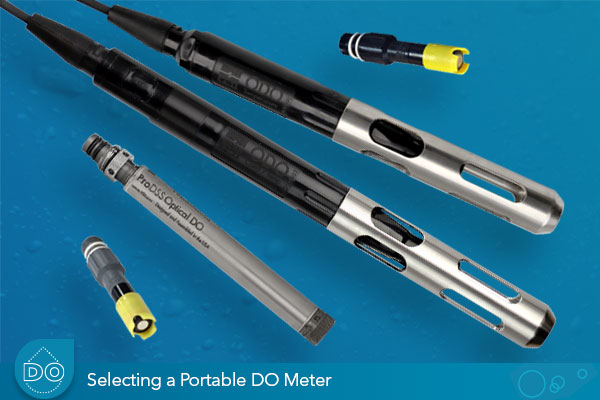
1. Dissolved Oxygen Technology
The first decision to make is what type of DO technology best suits your application – optical DO or traditional membrane-covered DO.
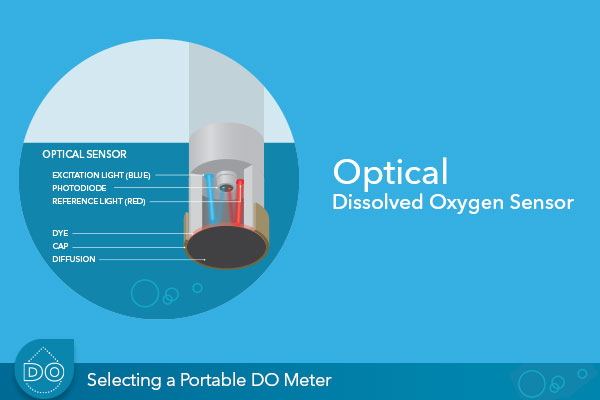
Optical DO sensors require no warmup time, so they can be used instantaneously. Additionally, these sensors do not require stirring or water movement for accurate measurements. Optical sensors hold calibration longer and require less maintenance than membrane-covered sensors. The ProSolo, ProSwap, and ProDSS portables all use optical dissolved oxygen sensor technology.
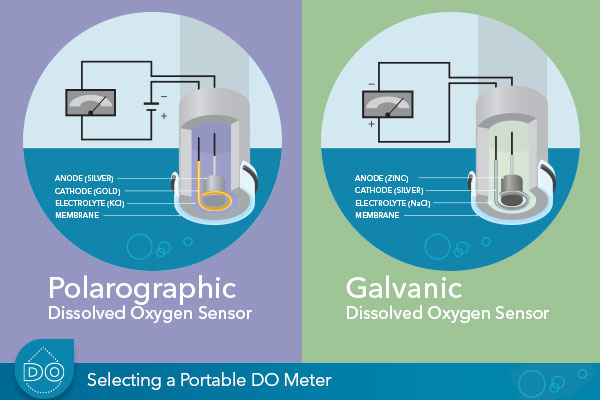
We offer two membrane-covered sensors, galvanic and polarographic. Polarographic sensors require a 10-minute warmup before use. Galvanic sensors don't require a warmup, but have a shorter lifespan than polarographic sensors. While membrane-covered sensors require more frequent maintenance for membrane changes and electrode cleaning, they do have a faster response time and a lower acquisition cost than optical sensors.
Both galvanic and polarographic sensors can be used on all of the Pro Basic DO instruments, which include the Pro20, the Pro20i, the Pro1020, and the Pro2030. Pro Basics cannot connect to a computer or use optical-based technology.
2. Additional Parameters
The second consideration for a portable DO meter is whether you want to measure more than just dissolved oxygen and temperature.
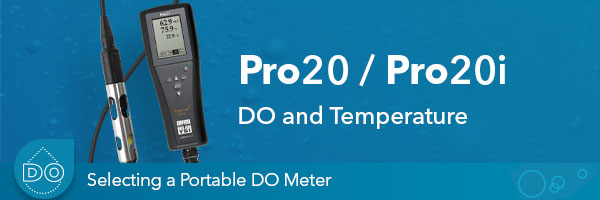
If you only need dissolved oxygen, you can choose between the Pro20s and the ProSolo. The Pro20 and the Pro20i are identical, except the Pro20i has an integral cable that can't be removed.

If you want to take advantage of optical technology, opt for the ProSolo. The ProSolo - the direct replacement to the ProODO - offers two probe options. [Learn More, Watch: YSI ProODO vs ProSolo Handheld Meters]. The first option is built-in temperature and optical DO. The second option includes built-in conductivity as an additional parameter. The added conductivity is useful for salinity compensation in saltwater environments.
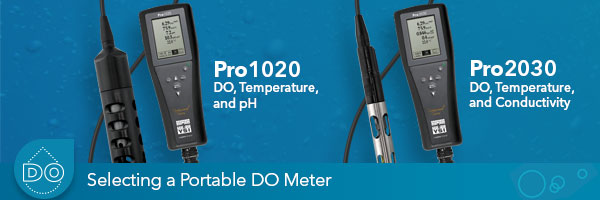
If you need to measure more than dissolved oxygen, you have many options. If you're sticking with membrane-style technology, you can get pH and DO on the Pro1020 or conductivity and DO on the Pro2030.
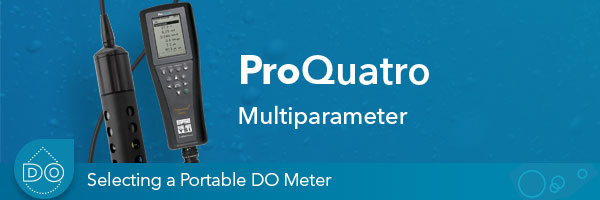
The ProQuatro offers more parameter options, including DO, pH, ORP, conductivity, chloride, ammonium, and nitrate.
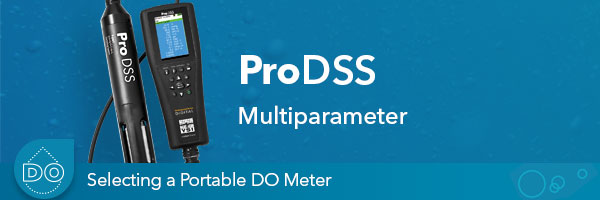
The ProDSS brings added versatility and customization with a four-port cable that allows for any combination of four sensors at once, including optical DO, pH, ORP, conductivity, turbidity, and total algae. This makes the ProDSS the ultimate portable meter for customers looking for versatile parameter options in addition to optical DO.
3. Cable Length
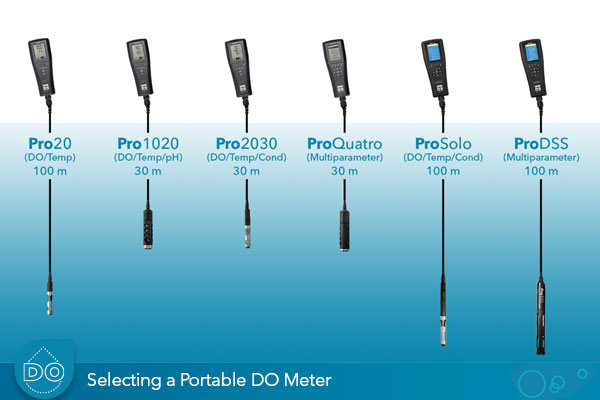
Cable length consideration is also crucial, depending on environmental conditions. Some instruments can go only up to 30 meters in length, so be sure to review the available cable length options to make sure it meets your requirements.
For example, if you're looking for a multiparameter instrument, keep in mind that the ProDSS cable lengths go up to 100 meters and have an option for an integrated depth sensor for profiling, whereas the ProQuatro only has a 30-meter cable option for its 4-port cable.
4. Data Management
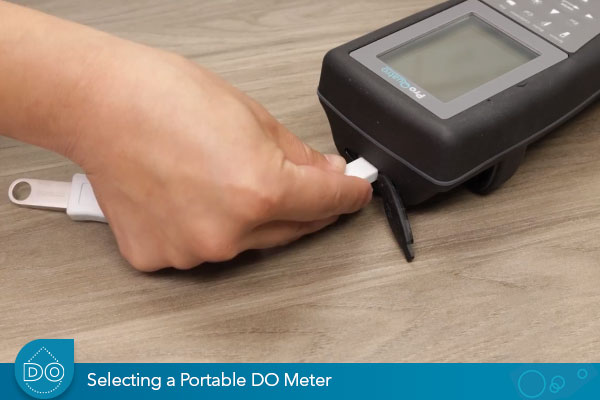
The fourth thing to consider is what kind of data storage or management you need for your application. The ProQuatro has increased data storage compared to the Pro Basic handhelds, and a USB port for data download and software upgrades.
The ProSolo, ProSwap, and ProDSS have even larger onboard data memory. And the ProSwap and ProDSS also have optional GPS capabilities. The ProSolo, ProsSwap, and ProDSS all interface with Kor Software, a unique data management tool to view live data, import and export your data, calibrate sensors and manage settings.
5. Durability
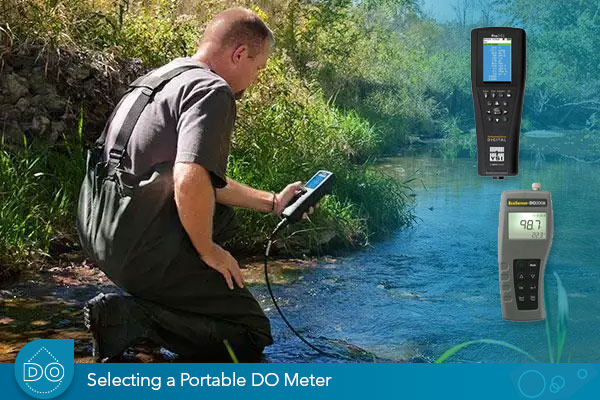
Finally, durability is key when performing fieldwork in a variety of environments. All of the meters we've discussed so far are waterproof, IP67-rated, drop-tested to one meter on concrete, and use rugged military spec connectors, ensuring long instrument life. If your application doesn't require rugged field instrumentation, we have the EcoSense line that uses the same sensing technology in a lower-cost handheld.
YSI's expansive water quality portfolio offers multiple options to meet your dissolved oxygen needs in the field. You can learn more about our portable DO meters here. If you need additional assistance, reach out and talk to our experts.
